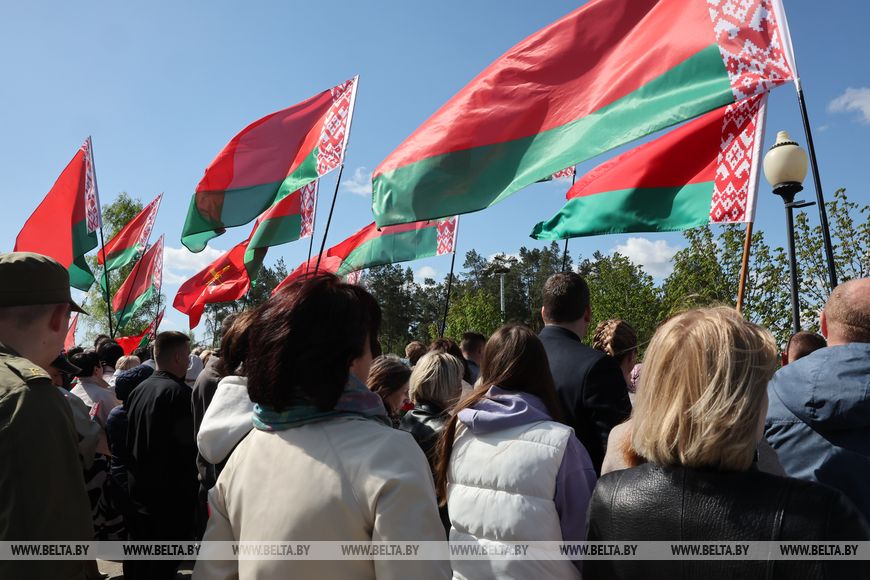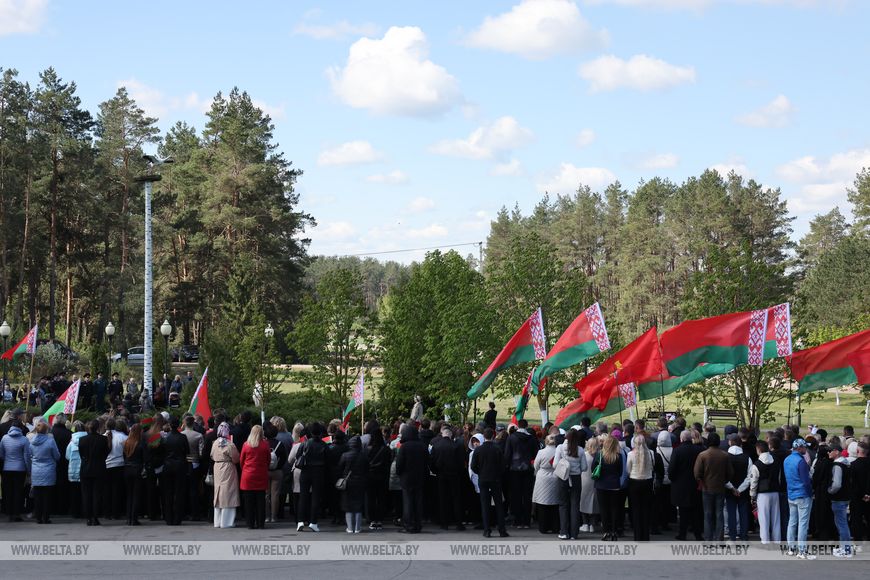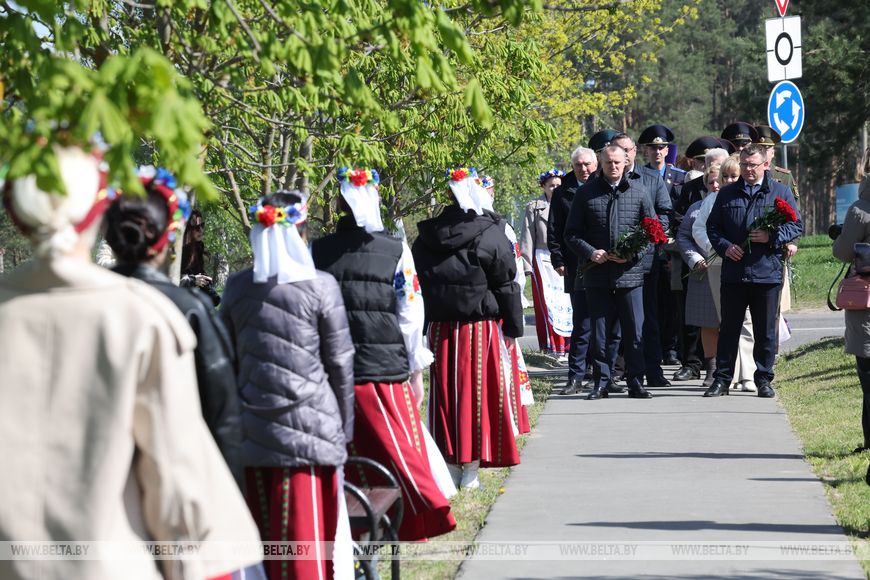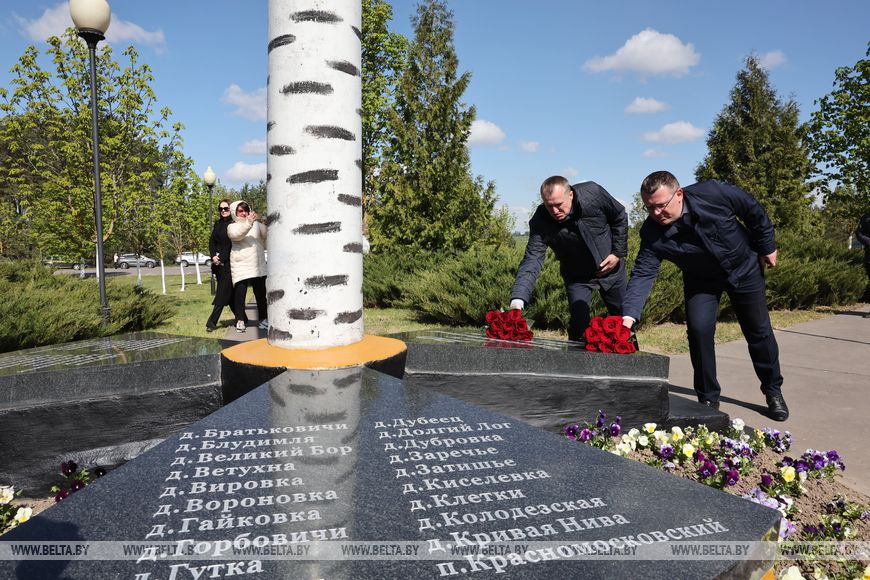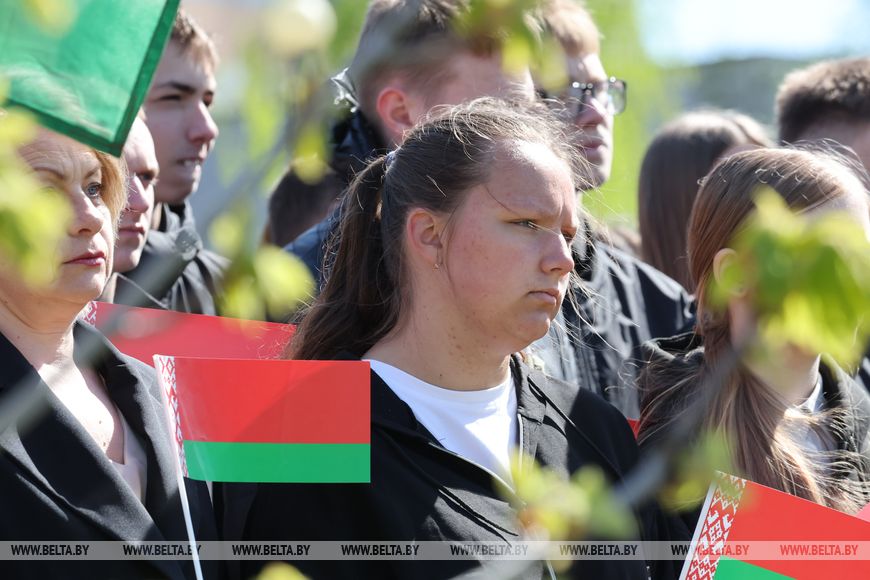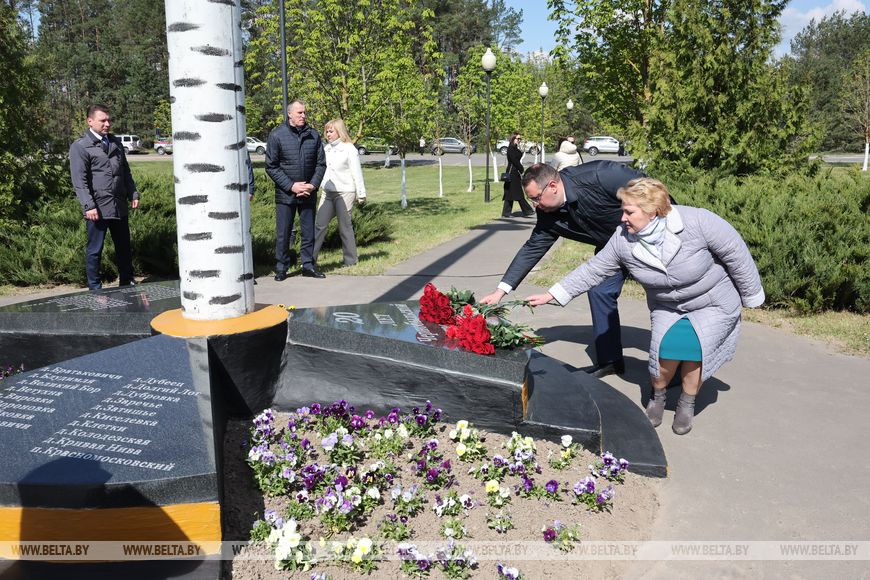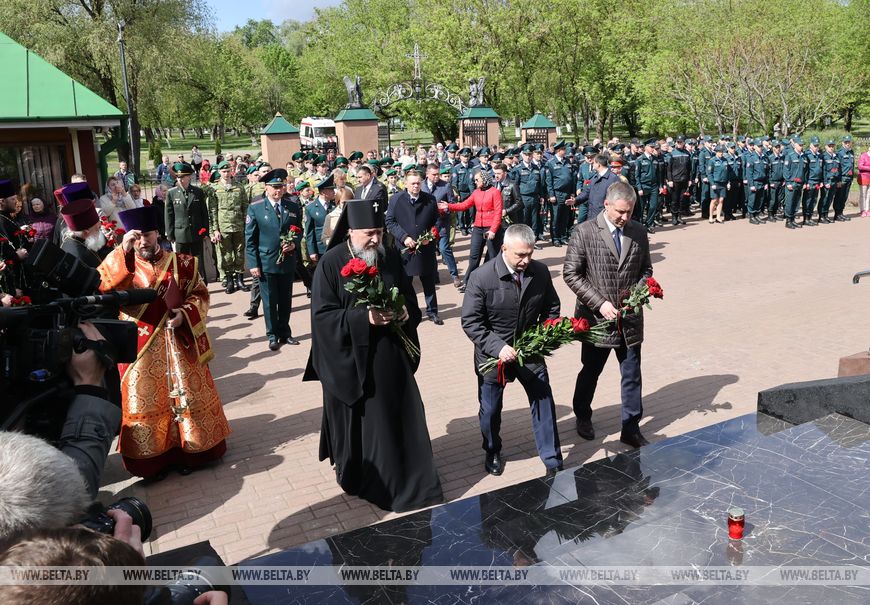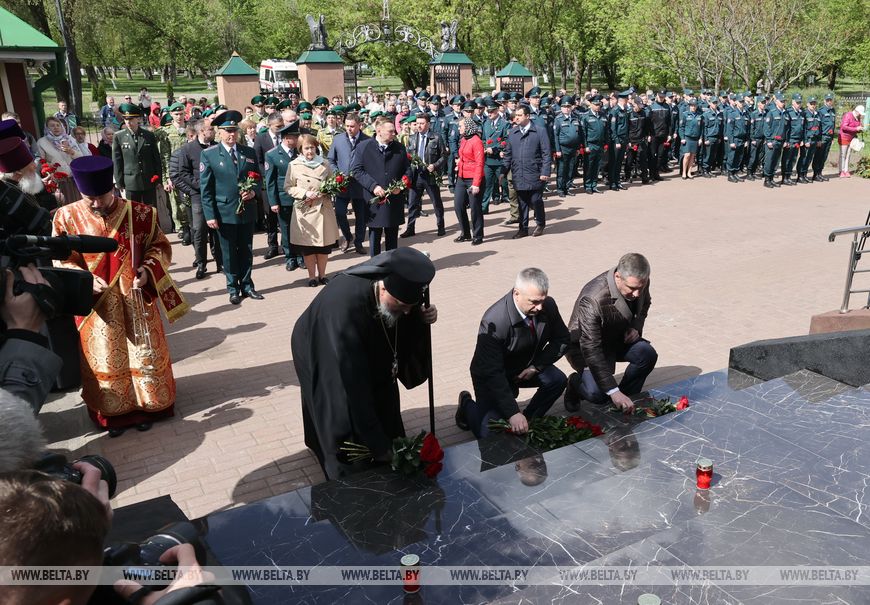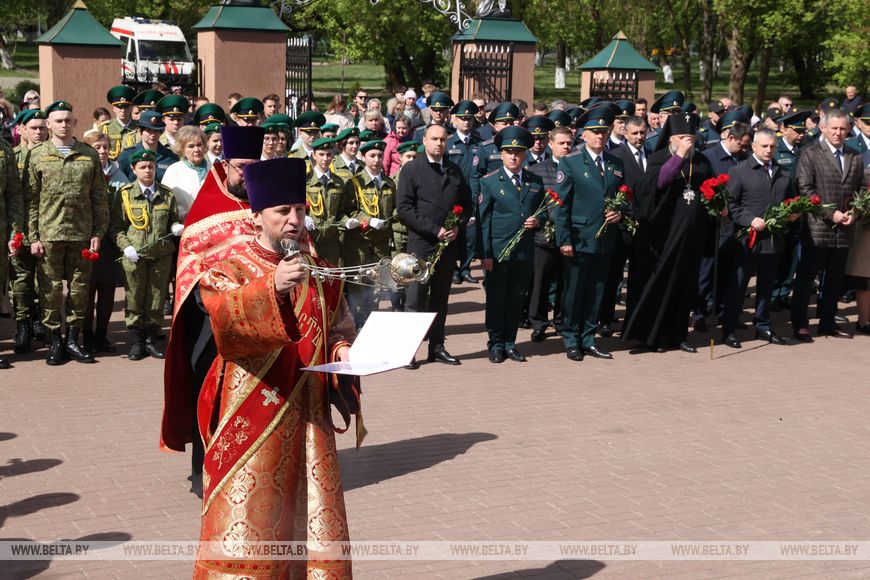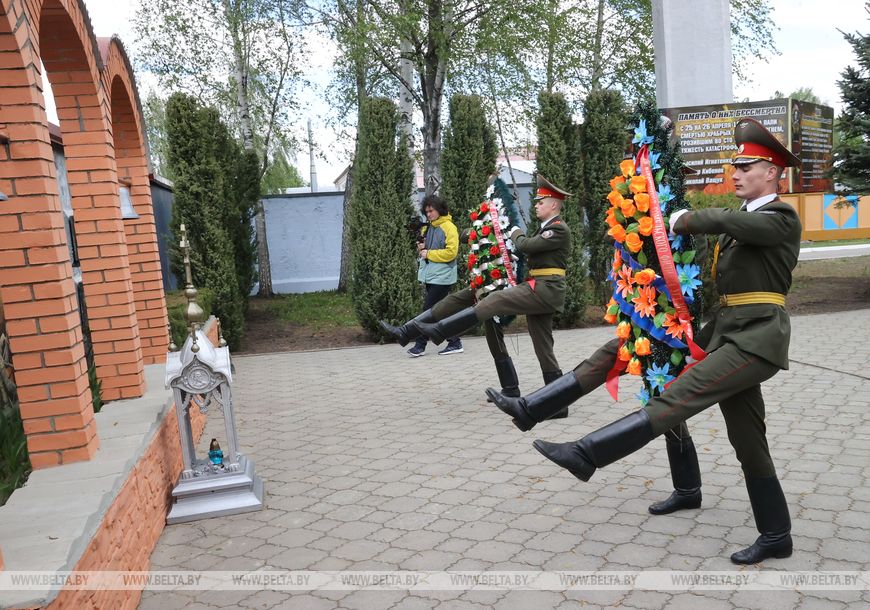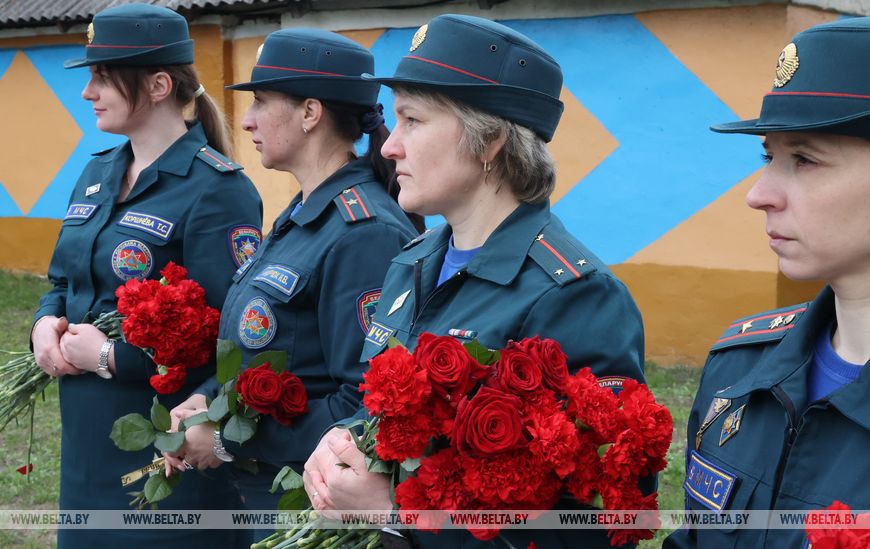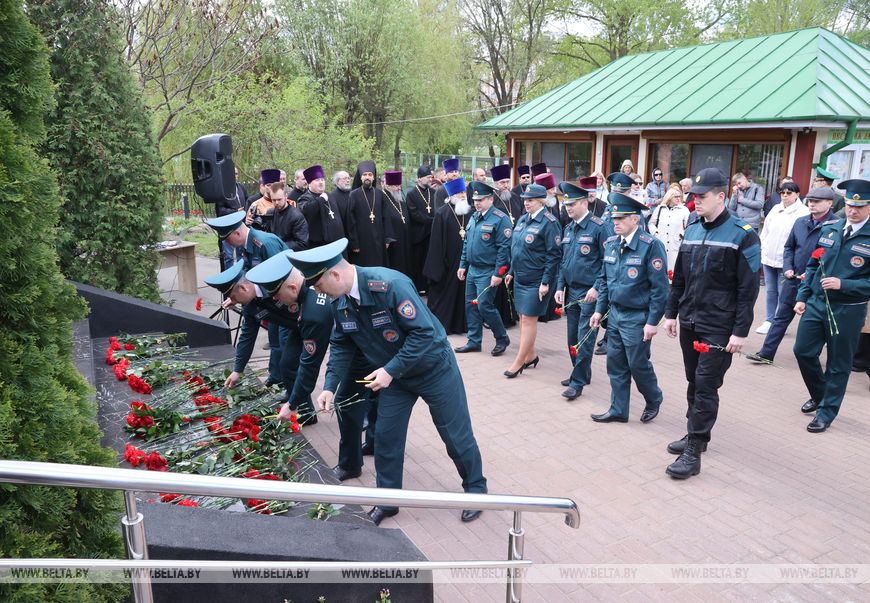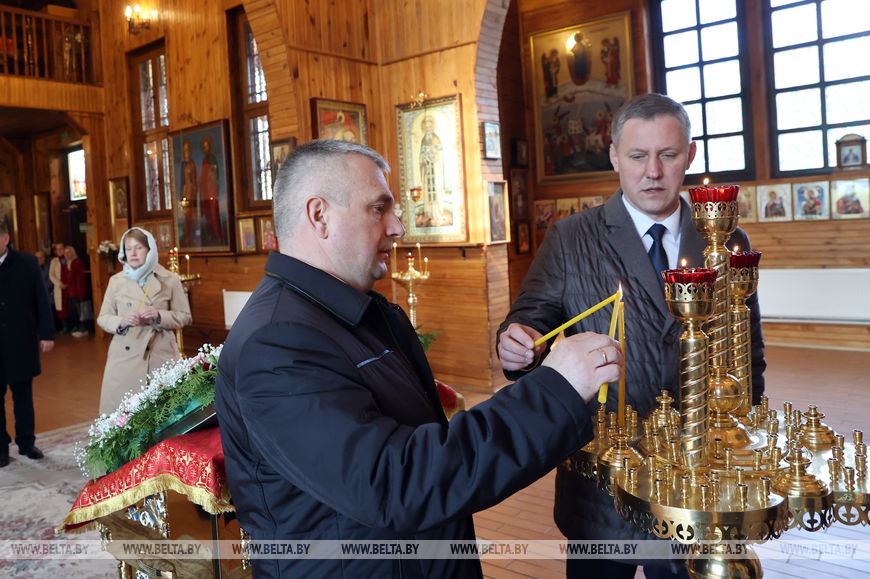
MINSK, 26 April (BelTA) – A catastrophe occurred at the Chernobyl nuclear power plant 39 years ago, on 26 April 1986. Its consequences have affected many countries across Europe one way or another but Belarus has been affected the most.
The Chernobyl nuclear power plant is located in Ukraine’s territory, 18km away from the city of Chernobyl, 150km away from Kiev, and 16km away from Belarus’ border. In the 1980s it was the USSR’s most powerful nuclear power plant.
Brief history of the accident

The fourth unit of the Chernobyl nuclear power plant began commercial operation in December 1983. Design trials of a safety system of the fourth unit of the nuclear power plant were scheduled for 25 April 1986. After the trials the reactor was supposed to shut down for planned maintenance. Due to restrictions of the control room personnel the reactor’s shutdown was postponed several times, causing certain difficulties with controlling the reactor’s output. The reactor’s output spiraled out of control at 01:24 on 26 April, resulting in explosions and the destruction of a significant part of the reactor installation. Fire broke out in various rooms and on the roof.
As a result of the accident the atmosphere was contaminated with practically the entire spectrum of radionuclides, which had accumulated in the reactor by the moment of the explosion, including iodine-131 (with the half-life of 8 days), cesium-134 (with the half-life of 2 years), cesium-137 (with the half-life of 30 years), strontium-90 (with the half-life of 28-29 years). In the first few weeks after the accident radioactive iodine, which isotopes concentrate in the thyroid gland and cause its irradiation, was particularly dangerous for humans. In the long term most of the radiation came from cesium-137 in a larger part of the Chernobyl footprint. An analysis of Europe’s territory’s radioactive pollution with cesium-137 indicates that about 35% of the Chernobyl-generated radioactive cesium on the European continent is located in the territory of the Republic of Belarus, this is why consequences of the Chernobyl catastrophe for Belarus are described as a national environmental disaster.

Since the accident Belarus’ territory contaminated with cesium-137 has nearly halved: from 23% to 12.3%.

As of 1 January 2025 the forest territory polluted with radioactive substances totaled 1,203,000 hectares (13.91% of the total area). Most of the forests polluted with radionuclides are under the authority of the Forestry Ministry and the Natural Resources and Environmental Protection Ministry.
Due to cesium-137’s decay the external radiation dose of the population is gradually falling. The radiation situation is getting better. However, it remains intense in the territory of the Polesie State Radiation and Ecology Reserve. It contains over 30% of cesium-137’s fallout in Belarus, 73% of strontium-90’s fallout, and 97% of plutonium isotopes’ fallout.

The pollution of Belarus’ territory was not uniform. It was affected by peculiarities of meteorological conditions from 26 April through 10 May 1986 among other things. As a result there are several main spots in Belarus. The first one is a 30-kilometer zone around the nuclear power plant where soil contamination with cesium-137 was particularly high. Then there is the so-called northwestern footprint in the south and southwestern parts of Gomel Oblast, central parts of Brest Oblast, Grodno Oblast, and Minsk Oblast. Contamination levels in this footprint are substantially lower than those in the vicinity of the Chernobyl nuclear power plant. The third spot is located in the north of Gomel Oblast and the central part of Mogilev Oblast.

From the first days after the catastrophe at the Chernobyl nuclear power plant the Belarusian government has been taking measures to protect the people, who live near the nuclear power plant. Right after the accident the government authorized evacuating the population from the territory where the ionization exposure rate exceeded 25 mR/h (the territory approximately within 10km radius from the Chernobyl nuclear power plant).
Settlements in radioactively contaminated zone
The Chernobyl disaster affected a large part of Belarus. In the contamination zone there were 3,678 settlements with 2.2 million people; 479 settlements ceased to exist.
137,700 people were evacuated from the Chernobyl-affected territories, 75% of whom were residents of Gomel Oblast. Simultaneously with evacuation and organized resettlement, about 330,000 people left the radioactively contaminated territories on their own.

Since the accident Belarus managed to reduce the list of settlements affected by the Chernobyl catastrophe. According to the legislation, the list of settlements and objects located in the zones of radioactive contamination is reviewed every five years and adjusted depending on the changes in the radiation situation, including based on the radiological survey of settlements.
Now there are 1,859 settlements in the zones of radioactive contamination, with 930,000 people, including 181,000 children. These are the territories of Gomel, Mogilev, Minsk, Brest and Grodno regions. In 2024, the absolute majority of the affected areas demonstrated consistently positive trends in socio-economic development. They post increases in the industrial and agricultural outputs.

Evacuation and resettlement zones
Belarus designated special zones of evacuation (alienation) and resettlement in the wake of the Chernobyl accident.
The Belarusian sector of the evacuation (exclusion) zone is an area of 1,700 square kilometers. The population was evacuated in 1986. The lands were withdrawn from economic use. The Polesie State Radiation and Ecology Reserve was established there in 1988. This is the only radiation and ecology reserve in the world. It is located in the Belarusian part of the exclusion zone spanning three districts of Gomel Oblast that were hit the worst by the accident: Bragin, Narovlya and Khoiniki. On the instruction of the Belarusian president, the reserve set up an experimental base. It includes a livestock farm, an experimental fruit orchard, bee apiaries, nurseries for growing planting material, and woodworking areas.
The exclusion and resettlement zones span over 13 districts of Gomel Oblast and Mogilev Oblast. The evacuation (alienation) and resettlement zones have a special legal regime to prevent unauthorized entry of citizens and vehicles, uncontrolled export of goods, poaching, foraging. The main approaches to the maintenance of these zones were formulated in the relevant concept. In contrast to the exclusion zone, the resettlement zone is allowed to run limited economic activities related to the maintenance of roads, power lines and other infrastructure objects.


Activities in the radioactive contaminated territories have been regulated by Gosatomnadzor since January 2023.
Radiation monitoring system in Belarus

Belarus has established a radiation monitoring system, which is part of the national environmental monitoring system. It includes an extensive network of observation points and accredited laboratories. The main monitoring targets are atmospheric air, soil, surface and groundwater.
At the national level, radioactive contamination control is carried out by the Emergencies Ministry, the Healthcare Ministry, the Natural Resources and Environmental Protection Ministry and the State Standardization Committee.
According to Gosatomnadzor, the permanent environmental monitoring network of the Natural Resources and Environmental Protection Ministry consists of 120 radiation monitoring points, including 38 reference sites and 14 landscape-geochemical grounds where soil samples are collected. In accordance with current legislation, Belarus prohibits the production and sale of products containing radionuclides exceeding permissible levels. To ensure compliance with this requirement, the country has created and effectively operates a radiation control system for food products, agricultural raw materials, forest products, and other goods produced in areas contaminated with radionuclides. This system is based on departmental control systems.

Approximately 1,000 radiation control units operate within organizations and enterprises affiliated with the Agriculture and Food Ministry, the Forestry Ministry, the Healthcare Ministry, the Belarusian Republican Union of Consumer Societies and other ministries and business entities. Radiation control units of the Healthcare Ministry and the State Standardization Committee perform relevant supervisory functions.
Social protection and recuperation of the affected population
Belarus has established a national registry for individuals affected by radiation exposure as a result of the Chernobyl nuclear disaster and other radiation accidents. Additionally, Russia and Belarus have created a unified Chernobyl registry. The main focus of state social policy concerning citizens affected by the Chernobyl disaster is to provide assistance to socially vulnerable groups and to offer benefits and compensation stipulated by the law of the Republic of Belarus titled "On Social Protection of Citizens Affected by the Chernobyl Disaster, Other Radiation Accidents".
One of the primary tasks is to improve the efficiency and quality of medical support for those involved in the elimination of disaster consequences and to enhance health resort treatment and recuperation programs for affected people, especially children, living in contaminated areas. The foundation of the medical support system is a specialized medical monitoring program for citizens affected by the Chernobyl disaster, which ensures early detection of illnesses, timely treatment, recuperation and preventive measures. New medical institutions, specialized clinics and centers have been established throughout the country. In 2003, the National Scientific and Practical Center for Radiation Medicine and Human Ecology was opened in Gomel under the auspices of Belarusian President Aleksandr Lukashenko. This center made medical care more accessible to regions most affected by the Chernobyl catastrophe.

District hospitals are provided with advanced medical equipment. Medical institutions introduce modern technologies, including telemedicine, NMR tomography, and other services for diagnostics and treatment of Chernobyl-affected citizens. One of the priority aspects in preserving and strengthening the health of children living in contaminated areas is a rational, balanced diet. All students of general education institutions located in radioactively contaminated areas are provided with free meals covered by the funds allocated to eliminate the consequences of the Chernobyl nuclear accident.

Spa resort treatment and recuperation is key to preserving health. Under current legislation, underage children living in radioactively contaminated areas and children living in clean areas and attending schools in contaminated areas are entitled to free health resort treatment or recuperation. The state pays special attention to improving the infrastructure of children's rehabilitation and health-improvement centers. There are 12 of them in the country. Thanks to a large-scale state program, about 97,000 citizens from the Chernobyl-affected areas, including 87,000 children, are entitled to health resort treatment and recuperation every year.
From recovery to sustainable social and economic development
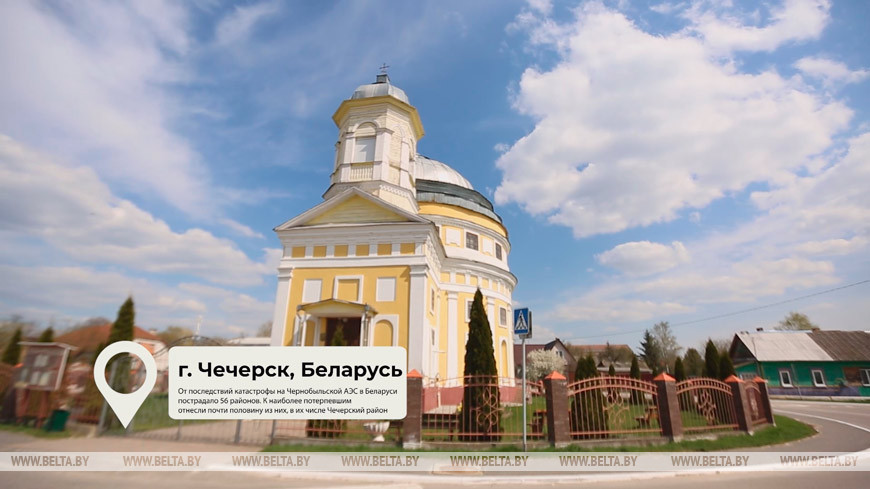
The implementation of the country’s policy to mitigate the consequences of the Chernobyl NPP accident has helped solve a number of major tasks. The state has undertaken measures to address radiation and environmental, medical, social and economic and other issues associated with the Chernobyl nuclear accident. State programs are the main instrument in the implementation of the state policy to mitigate the consequences of the Chernobyl NPP accident. Five state Chernobyl programs have been implemented since 1990. The sixth one, 2021-2025, is currently underway. The main objectives of the programs are social protection of the affected population, commitment to radiation safety requirements, accelerated social and economic development and revival of the territories classed as contaminated with radionuclides.
Along with the state Chernobyl programs, a number of international projects have been implemented in Belarus over the past 39 years. A great contribution to the rehabilitation of the territories was made by the Union State programs of joint activities to mitigate the consequences of the Chernobyl disaster. The implementation of the Union State Chernobyl programs is carried out along with the state programs of Belarus and Russia.

The programs helped make significant capital investments in the construction and equipment of medical facilities. A number of pilot projects focused on farm rehabilitation in the areas contaminated with radionuclides. The programs highlighted new approaches to awareness-building efforts on Chernobyl issues. The Russian-Belarusian Information Center has been established with offices in Moscow and Minsk.
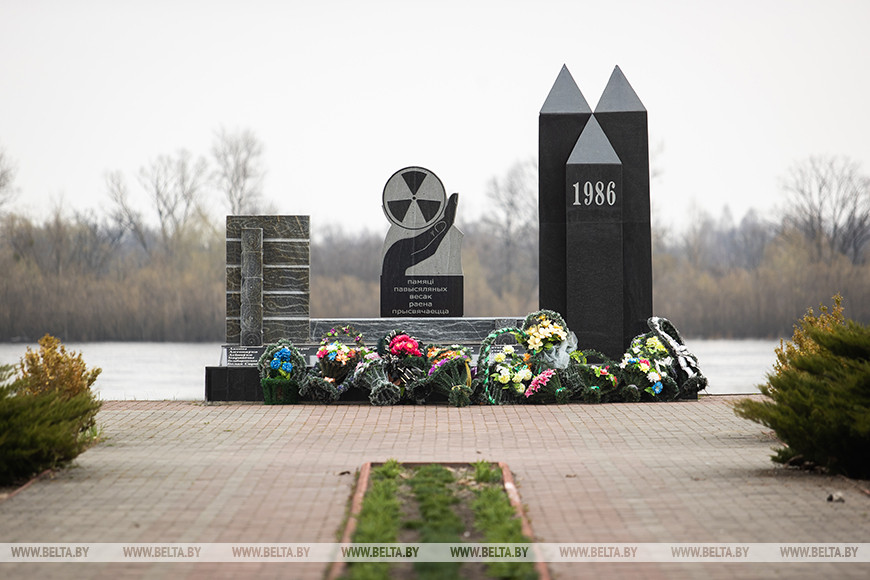
Over the past 39 years, Belarus has gone from a recipient country of humanitarian aid to a full-fledged partner and country with expertise in overcoming the consequences of a large-scale man-made disaster. Today Belarus has unique scientific and practical experience in medicine and ecology, emergency preparedness, production of clean products, reclamation of lands, forests and their return to use.

